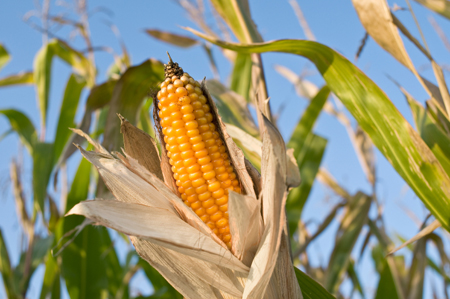 (AgWeb) – Producers on the northwestern fringe of the Corn Belt are feeling the squeeze as transportation bottlenecks cause basis to widen.
(AgWeb) – Producers on the northwestern fringe of the Corn Belt are feeling the squeeze as transportation bottlenecks cause basis to widen.
As mid-August approached, the unthinkable was happening to corn prices. For producers on the northwestern fringe of the Corn Belt, local corn quotes were as low as $2.50/bu. for fall delivery, not much better than that for old crop. Tumbling futures prices since late spring were a major reason, but basis was also weighing down corn bids. The spread between futures and local prices has widened to more than $1/bu. in isolated cases, with average basis in this part of corn country the widest since 2008.
“From the 2012 to the 2013 crop, we had an under-supplied, high-demand corn market; now the market is over-supplied and that’s reflected in basis,” says John Melius, farm market consultant for Hurley and Associates in Brookings, S.D.
While basis has widened considerably for new-crop corn regardless of location, the spread from region to region is huge. This could result in major crop acreage shifts come spring 2015 in the outer reaches of the Corn Belt, Melius says. Current basis bids for Valley City, N.D., are 80 cents and 85 for new crop; 80 current and 87 cents new crop for Aberdeen, S.D.; Kelly, Iowa, 21 cents current basis bids/46 cents new crop; and Champaign, Ill., 0.01 cents old crop/27 cents new crop.
At the extreme, however, some producers have seen basis as wide as $1 to $1.25 under corn futures prices, says Nate Franzen, agribusiness division president of First Dakota National Bank in Yankton, S.D. The math doesn’t lie: as much as $1/bu. separates what producers in Illinois and some in North Dakota and South Dakota have received.
Key causes of wide basis in North Dakota, South Dakota and northwestern Minnesota are transportation bottlenecks. The No. 1 culprit is the railcar shortage that has hammered basis since winter.
In comparing basis this winter and spring to the benchmark year of 2009/10, corn, soybean and spring wheat basis widened from about 40 cents to 80 cents, costing state farmers an estimated $66.6 million for January and April alone, says Frayne Olson, ag economist from North Dakota State University. “The potential exists for additional losses unless the situation improves.”
Many factors are responsible, but one of the biggest is oil industry demand for rail cars in North Dakota’s Bakken oil fields, which has left fewer rail cars available for agriculture. This issue has hiked basis and the problem could take four to five years to be resolved, Melius says. He quickly adds, however, that “rail companies are incentivized to invest in infrastructure—more track, engines, rail cars and personnel—to resolve the rail car shortage.” Already, they have invested several billion dollars.
The problem may get worse before it gets better because of this year’s harvest. “Bins will be busting in the fall,” Melius says. “We don’t have storage capacity for all of it.” In places, he expects corn will be stored on the ground. In addition, faced with $2.50 corn—about $2/bu. below cost of production—some producers may not harvest corn for several months, choosing to let it dry down in fields to avoid spending tight cash on propane, Melius says.
Looking to next spring, wide basis in parts of North Dakota, South Dakota and northwestern Minnesota could have a huge impact on what producers plant. “Corn acres will be down,” Melius predicts. He sees a significant shift to soybeans and even a reversal back to more historically significant small grains.
Olson says that unlike many states, farmers in North Dakota have upwards of 10 crops they can plant based on profitability, and present economics favor a corn acreage pullback. This has national repercussions because the major growth in corn acreage over the past decade has not been in places like Iowa and Illinois, but more transitional areas.
Comparing 2003 and 2013, U.S. corn acreage was up 21%, but North Dakota corn acreage was up a whopping 166%; South Dakota, up 41%; Kansas, 48%; and looking south, Texas, up 26% despite multiple years of drought. However, Iowa corn acreage, the highest of any state, was up a modest 9.7% comparing the two years, less than half of the U.S. increase, with Illinois up 7%. Of the 16.6 million U.S. corn acreage pop over the decade, North Dakota alone was responsible for 14.5% of it, or an additional 2.4 million acres. Iowa increased by 1.2 million, exactly half the increase of North Dakota in actual acres.




